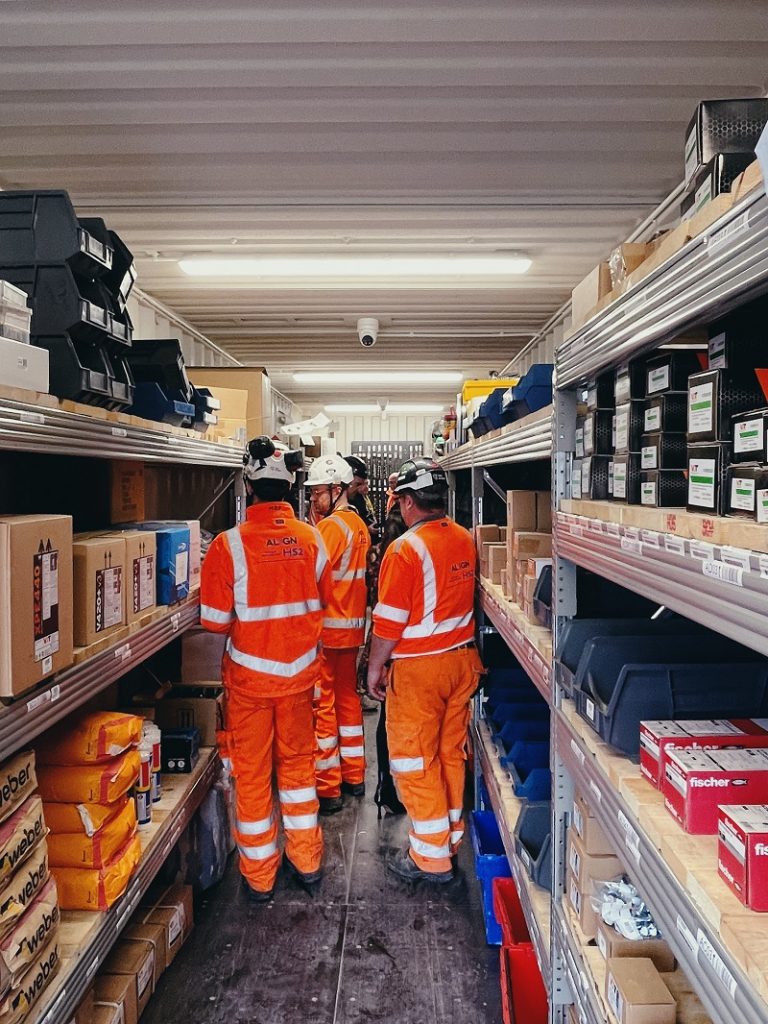|
|
 By David Trossell, CEO and CTO of Bridgeworks By David Trossell, CEO and CTO of Bridgeworks
Let’s face it, change is often held back by fear. The same principle applies to both the public sector and the private sector. People are often the reason why projects advance, don’t go hard or fail. With artificial intelligence – particularly generative AI – there is some fear of what may happen. Movies such as ‘2001: A Space Odyssey’ and The Terminator depict our fear of machines taking over.
Indeed, Elon Musk has recently raised this prospect by calling for a halt in artificial intelligence development for a period of six months. He has called for an open discussion about the ethics of the technology to consider the impact and the implications this could have on society. There’s nothing wrong with open debate. It’s perhaps needed. However, the march towards an AI world isn’t new. Its development has been going on for years.
So, what’s needed is a fresh look at the benefits of artificial intelligence and its demerits – or dangers. AI is, after all, considered to be the next revolution, and with it there will be the good, the bad, and the ugly uses of it. This isn’t anything new. Since the dawn of time, societies have been shaken by political, social and technological revolutions. In the year 2023, these revolutions continue. AI is but one of them, albeit perhaps more evolutionary than revolutionary in many respects.
Impacting industry, government and society
Artificial intelligence will impact on every corner of society and every sector of industry. The government and public sector isn’t immune to it, and so it needs to be prepared for the technology to force change in how it operates and on how society does, too. Just look back at some of the technologies people take for granted today. That includes the wheels our cars, buses, lorries, trains, military vehicles and aircraft roll on.
At some point, wheels might have seemed like an oddity, but the invention of the humble wheel made the transportation of goods much easier and effective. From a military perspective, wheels changed warfare – from horse-drawn chariots to tanks. Regarding chariots, the Romans put them to great use – allowing them to conquer most of the Mediterranean, France, Germany, England, and so on.
Think about the revolution that Caxton’s printing press had. It killed the monopoly of the church in European countries, allowing for a wider group of people to express their thoughts and opinions. No longer could the church suppress societies, nor hold sway over the population. Without this release, there may not have been any technological and commercial advancement. By freeing up thought, and by taking back control of the written word, innovations could take place, be adopted and spread.
This includes the shift from the agricultural to the industrial revolution. One begot the other due to necessity. With this change, and in the search of more employment and higher wages beyond the fields and medieval feudalism, people moved to the cities. Agriculture had to change in turn by becoming more mechanised, and by adopting new technologies to meet the demand for food in the cities.
Over time, technology to irrigate crops developed. First, people had buckets and then the Archimedes screw. Roman viaducts brought fresh water to cities and the ability to remove waste with the invention of sewers, which allowed there to be larger cities. Pack animals and wagons were needed to supply cities. They were eventually replaced by canals. This lowered the cost of transport, which drove the industrial revolution. Steam engines replaced water wheels, and steam railways replaced canals, and the model T ford replaced the horse. So, it goes on – and more to the point is part of this ongoing evolutionary process, which may often have revolutionary implications.
Back to agriculture. Just as there is a call to regulate artificial intelligence, agriculture also faces challenges. Anyone who’s watched both series of Clarkson’s Farm will see that one of those challenges emanates from government regulation and local planners. Some laws and regulations may be necessary. Others could appear to be either Draconian or absurd. So, the government and public sector should be listening to industry and to the people to ensure that policies, laws and regulations are applied in a measured and rational way by considering their impacts dispassionately.
Revolutions often occur during wars. This applies to nuclear power. It can be used for good to power electricity in our homes, or by used adversely to make the human race extinct. This is a prospect people must accept and hope it doesn’t come to fruition. Many other technologies have also been developed at a quickened rate because of wars. They tend to expedite innovation – including the march towards today’s artificial intelligence and digital revolution.
Digital revolution
I remember watching a BBC Horizon programme in the 70s about how the digital revolution was going to change society – pushing people away from the burden of the 40-hour week to massive leisure time. Like the soothsaying about artificial intelligence, the programme predicted mass unemployment in traditional industries. Well, that didn’t happen. A revolution first creates chaos before the population changes. Migrations then occur, and this creates new industries and new revolutions.
The same principle applies to the development of artificial intelligence. People and organisations will just need to adapt to thrive. The trouble is that human nature likes stability. A stable environment is comforting, allowing for routine predictability and long-term planning. However, the turnover in electronics, semiconductors and computers systems has created instability. This creates uncertainty in the population – people have the increased pace of innovation leaves parts of the population and even some nations behind. This applies as much to AI as to any other ‘revolution.’
‘Uncertainty in uncertain times’
That is why artificial intelligence is beginning to create uncertainty in uncertain times. It raises questions that even the government and public sector will perhaps need to address, such as: Is AI going to create mass unemployment, and is it going to create an underclass? Digital poverty is something that the public sector has been trying to address by promoting educational courses for those that can’t afford their own PCs or smartphones – noting that there are concerns that cash is likely to wither, as more and more organisations are demanding digital payments.
They raise another spectre for some people who believe that central bank digital currencies will enable governments and central banks to have too much authoritarian control over their daily lives and purchases. Others dispute these claims, and they cite that CBDCs could reduce incidents of financial fraud. Yet, this fear is also enticing some people to embrace blockchain and cryptocurrency technology as a means of removing any such control from central banks. Each revolution often has a counter-revolution. The development of AI is no different.
Artificial intelligence is fast
That said, AI is fast. However, it is not necessarily accurate. Yes, it’s back to the case of garbage in, garbage out. Much depends on the learning material, the data that machine learning uses. It is easy to create a bias against people of certain types or against folk within certain financial positions without having a complete understanding or care of why certain types of behaviour or trends are occurring. This means that AI has no soul, no morals nor even no original thought or imagination. My experience with chatbots leads me to think we still have a way to go for mainstream AI.
However, not everything about AI is about the bad and the ugly. Artificial intelligence brings with it some significant benefits, as with any other technology. In healthcare, AI is being used for cancer detection, drug scanning and formulation. Generative AI, such as ChatGPT, is being used for software code generation and bug finding. Then you have machine learning and artificial intelligence being used for Earth climate predictions, and a whole range of other opportunities.
Automation, decisioning and intelligence
Artificial intelligence can be used to automate processes and to improve decision-making and intelligence. Rainbird AI is one such organisations that does this, and its technologies can be used in the government and public sectors. It uses AI and machine learning in its decision intelligence solutions. The company says organisations can “automate high-quality decisions based on real-time customer data. Your customers can now experience minimal waiting times, high-quality recommendations and intuitive customer support.” This can be applied to the government and public sector as much as it can to the private sector. For the latter, it will be used to differentiate the quality of customer service.
Alan Holden, Ben Szuhaj, Joe Mariani, and Tasha Austin write for Deloitte’s Perspectives, ‘Designing for the Public Sector with Generative’. They add: “With a few rules of design, government leaders can harness new generative AI tools to help design the innovations of the future.” They argue that “forward-thinking government leaders should begin considering how generative design could transform their operations, increase innovation and deliver real value to the public.”
“Potential applications of generative design in the public sector include facility design, urban planning, policy creation, customer experience, learning and development and reducing carbon emissions.” As well as claims that generative AI will transform the public sector and make it more efficient, there is much talk about how artificial intelligence and machine learning can be used to improve cloud management and cloud automation.
Improving data flow
Then there is WAN Acceleration, which uses artificial intelligence, machine learning and data parallelisation to mitigate the effects of latency and packet loss, while improving bandwidth utilisation. It enables organisations, such as the National Institutes of Health (NIH) in the US, as well as other public and private organisations to backup, send and receive voluminous amounts of encrypted data over large distances. Even technology, such as SD-WANs, can benefit from having a WAN Acceleration overlay – vastly improving their performance.
Bridgeworks has used artificial intelligence, machine learning and data parallelisation over the last 12 years in its WAN acceleration products. With WAN Acceleration, organisations can emulate a highly skilled network engineer to constantly tune the way data is fed onto a WAN to maximise the throughput every millisecond. So, should we fear AI? Not if it is used in the right way, and for the right reason. Like any other technology, it can be destructive in the wrong hands. Still, AI is the next revolution that’s been evolving for some time, and it requires us to take the good over the bad.
- Government signs agreement with BioNTech SE to provide up to 10,000 patients with precision cancer immunotherapies by 2030
- NHS England’s new Cancer Vaccine Launch Pad aims to improve access to personalised treatments and clinical trials
- BioNTech SE to set up laboratories and a regional hub in England to support the development of immunotherapies
Ground-breaking new cancer treatments have moved a step closer with the signing of a major agreement between the government and BioNTech SE.
Building on a memorandum of understanding signed in January, the partnership will provide cancer patients with improved access to the latest cancer trials and therapies currently being developed.
The government has signed a long term partnership agreement with the German-based company BioNTech – which previously developed a world leading COVID-19 vaccine with Pfizer – to ensure more patients can benefit from personalised cancer treatments.
This includes UK-based clinical trials intended to help treat patients through the use of precision immunotherapies which work by stimulating the immune system to recognise and eliminate cancer cells. The aim is to provide access to personalised treatments for up to 10,000 patients by 2030.
BioNTech SE has already begun conducting clinical trials in the UK. Further trials will be launching although the majority of patients are expected to be enrolled from 2026 onwards.
To help deliver this research, BioNTech plans to set up new laboratories in Cambridge with an expected capacity of more than 70 highly skilled scientists as well as a new regional hub for the United Kingdom.
The Prime Minister, Rishi Sunak, said:
“This landmark new agreement takes us one step closer to delivering life-saving new cancer treatments for thousands of patients right across the country.
“The UK is a global leader in life sciences – helping to create thousands of highly skilled jobs and pioneering research – and it is testament to this success that BioNTech have chosen to make this significant investment here today.
“Personalised cancer vaccines have the potential to completely revolutionise the way we treat this cruel disease and it is hugely welcome that, thanks to today’s announcement, clinical trials will be rolled out widely”
Secretary of State for Health and Social Care, Steve Barclay said:
“This partnership is a huge step forward in the fight against cancer.
“By working together with BioNTech on these innovative treatments we can make progress and save lives and I’m excited by the potential these trials have to both treat patients with cancer and those who have had it to stop it returning.
“This further demonstrates that the UK is an attractive location for innovative companies to invest and pioneer cutting edge treatments for our patients and underlines this government’s commitment to research and development.”
A new Cancer Vaccine Launch Pad (CVLP) led by NHS England in partnership with Genomics England, will help to rapidly identify cancer patients who could be eligible for potential trials.
It will work by creating a database of suitable NHS cancer patients who will be offered the choice to take part in personalised cancer vaccine trials.
The partnership will aim to help patients with early and late-stage cancers and, if successfully developed, cancer vaccines could become part of standard care.
Amanda Pritchard, chief executive of the NHS said:
“The NHS will not stop in its efforts to pioneer new treatments that could be life-changing for future generations. This is why we are developing our very first Cancer Vaccine Launch Pad, enabling us to identify thousands of NHS patients suitable for cancer vaccine trials – giving them the earliest possible access to cutting-edge technology that has the potential to change cancer care forever.
“Thanks to advances in treatment and care alongside NHS awareness campaigns, cancer survival is at an all-time high, but the potential to stop cancer from returning is truly remarkable – and with the first patients set to take part in vaccine trials this autumn, we hope to find a way of vaccinating people against their own cancers and improve their chances of survival.”
Trials will focus on personalised mRNA-based cancer immunotherapies – a type of cancer treatment that activates the patient’s immune system and can either be designed to target shared abnormalities in a specific type of cancer or tailored to an individual’s tumour.
Immunotherapies tailored to an individual are created by analysing a patient’s tumour to identify mutations that are specific to that individual’s cancer, then using that information to create an immunotherapy personal to that patient.
The partners involved will work to make processes as simple and effective as possible with BioNTech aiming to start further clinical trials and make potential new therapies available in the UK as soon as possible.
Professor Uğur Şahin, M.D., Chief Executive Officer and co-founder of BioNTech said:
“We are truly honoured to be an integral part of this landmark partnership, alongside the UK government, NHS England, Genomics England, and the National Institute for Health and Care Research.
“The United Kingdom’s expertise in genomic analyses in cancer patients is a critical component of our shared endeavour to make mRNA-based and precision cancer immunotherapies widely accessible through clinical trials.
“If successful, this collaboration has the potential to improve outcomes for patients with cancer not just in the UK, but also worldwide.”
Sean Marett, CMG, Chief Business Officer & Chief Commercial Officer at BioNTech SE, said:
“Through the development by the UK of a unified national contract approach for clinical trials that will let hospitals rapidly sign-up to clinical trials being undertaken in the UK by BioNTech, we are hoping to reach many UK cancer patients that wish to participate in clinical trials with new BioNTech investigational cancer treatments quickly and efficiently.”
Business & Trade Secretary, Kemi Badenoch, said:
“This government is supporting our life sciences sector to be among the best in the world, with no better example than our global leadership in developing and rolling out the first Covid-19 vaccines.
“Investment in life sciences is key if we are to become a science superpower by 2030, helping to grow the economy and provide substantial health benefits for the British public and the world.”
Patients will be asked by the NHS to consent to be put forward for clinical trials, and surplus tissue samples will be used to assess their eligibility.
The detail of any suitable clinical trials will be made available to the participant and their treating clinical team to see if they would like to take part in the relevant trial.
Secretary of State for Science, Innovation and Technology Chloe Smith said:
“I know from personal experience how it feels to face a cancer diagnosis. I was immensely fortunate to benefit from world-leading care from our wonderful NHS. There are brilliant scientists, researchers, and medics working on the kinds of lifesaving cancer treatments and therapies that this deal will deliver.
“This partnership is the perfect example of how our £94 billion life sciences sector is improving lives across the country. This deal will anchor high-skilled jobs and investment in the UK. But most importantly, it will deliver better outcomes for patients with cancer in England, ensuring that more of them can go on to live long, happy, and healthy lives.”
Chris Wigley, Chief Executive Officer of Genomics England said:
“Since the times of Darwin, Franklin, and Sanger, the UK has been a true world leader in genomic science and healthcare. To sustain that leadership, we have to continue to deliver more world firsts, more innovations, and more benefits to patients, both nationally and internationally.
“We talk about the Cancer Vaccine “Launch Pad” – the rocket that is being launched is access to ground-breaking personalised cancer therapies that can transform lives and improve outcomes for those affected by this terrible disease. It’s almost hard to comprehend, but there are medicines made just for you, to attack your very own cancer tumour.
“We’re thrilled that this partnership will see genomics extend beyond diagnosis and take us towards a future of personalised cancer treatment.”
High-trust organisations believe technology choices play a vital part in securing customer trust
For nearly three quarters of AV professionals (70%) improving customer trust is the number one priority when selecting new collaboration and communication tech, beating other options such as increasing efficiency (69%) and increasing productivity (68%). That’s according to a new ‘Trusted Connections 2023’ study from AV solutions provider Kinly.
The research, which surveyed 150 AV professionals working across the UK’s banking, finance, healthcare, energy, and public sectors, also revealed that nearly half (44%) of AV professionals believe that the right communications technology will ‘make or break’ the customers’ experience.
 For organisations working in ‘high trust’ sectors, ensuring positive, easy communications with internal and external stakeholders is crucial for maintaining trust. In fact, nearly half (41%) of those surveyed say that their choice of tech is a ‘vital part’ in securing customer trust, while 46% believe communications tech is also ‘vital’ for building employee trust. For organisations working in ‘high trust’ sectors, ensuring positive, easy communications with internal and external stakeholders is crucial for maintaining trust. In fact, nearly half (41%) of those surveyed say that their choice of tech is a ‘vital part’ in securing customer trust, while 46% believe communications tech is also ‘vital’ for building employee trust.
Despite the understanding that communications technology plays a pivotal role for high-trust sector organisations, many are still concerned about the quality of their tech. Nearly three quarters (73%) of AV professionals believe their comms workflows still have ‘room for improvement’ when it comes to interoperability, while 64% feel their workflows could be more efficient.
Speaking about the new research, Kinly’s UK region Managing Director, Taj Ghere said: “All too often, businesses see AV as just about productivity and efficiency, but it’s so much more than that. The tools we use to communicate can seriously impact a customer’s long-term trust in an organisation.
“For ‘high trust’ sectors such as healthcare, law or banking — those dealing in sensitive and personal information — workflows and AV technologies are an essential part of building and maintaining customer trust. Through our Trusted Connections research, we wanted to take a deep dive into these specific sectors, providing insights into their unique challenges and needs. For these industries it’s not enough to simply install your typical AV tech. Combined, bespoke and customised solutions are required.
“That’s why it’s so important for these sectors to work with specialist AV partners, who can guide them to the right mix of technology for better interoperability, improved efficiency and most importantly trust.”
To find out more about the new research and download your own copy, visit the Kinly website here.
 Lord Kerslake (credit – Peabody) A University of Manchester publication released today presents a series of evidence-led solutions to tackle regional inequalities and boost the levelling up agenda.
The 44-page document begins with a characteristically incisive foreword from Lord Kerslake, former Head of the Home Civil Service.
Power in Place – published by the University’s policy engagement unit, Policy@Manchester – incorporates research and recommendations from academics across nine policy areas.
These include strengthening participation in devolved policymaking, boosting young people’s wellbeing, making local environmental policy more inclusive, and supporting charitable organisations through the cost-of-living crisis.
Closing the attainment gap in schools for children living in poverty is another key policy challenge featured in the publication, together with addressing health inequalities in left behind neighbourhoods, placing health and wellbeing at the heart of urban regeneration, encouraging better ‘place-based’ coordination of skills and education opportunities for young people, and mapping spatial differences to make policymaking more effective.
In his foreword, Lord Kerslake acknowledges that last year’s Levelling Up White Paper “gave official recognition by the government to the deep-rooted and long-standing nature of regional inequalities across the UK.”
But he says: “Those people who questioned the scale and depth of inequalities have been exposed as modern ‘flat earthers.’”
The crossbench peer argues that “political rhetoric now needs to be translated into policies and programmes of action” which are “still missing.”
He continues: “In part this is because of the complexity of the challenge and the need for change in both our institutional structures and technical capacities. This is highlighted in the diversity of contributions in this Policy@Manchester publication.”
Lord Kerslake writes: “Despite the rhetoric of levelling up places, government policies are still ‘place blind’.”
He adds: “The articles in this report provide evidence-led ideas about how we can improve place-based approaches to tackle inequalities.”
 Professor Cecilia Wong Professor Cecilia Wong, academic co-director of Policy@Manchester, said:
“We are excited to publish Power in Place which is a significant contribution to the national debates on levelling up policy as we approach the next General Election.
“The diversity of subject areas addressed in the document underline the remarkable quality and breadth of public policy thinking by academics at the University.
“Policy@Manchester is particularly grateful to Lord Kerslake for writing such an illuminating foreword, based on his many years of experience at the highest levels of local and national government.
“We hope the publication is read widely by policymakers, and the suite of solutions it provides are taken onboard.”
Power in Place is now available to read on the Policy@Manchester website.
 Matt Glass has been appointed as new board chair of UK’s leading supplier diversity organisation, MSDUK. Matt Glass has been appointed as new board chair of UK’s leading supplier diversity organisation, MSDUK.
In the role, Matt will lead MSDUK’s board as they continue to support a thriving network of corporates and ethnic minority businesses (EMBs) to improve supplier diversity for individuals, communities, and businesses across the UK and Europe.
Matt leads European Property Development and Facilities at Enterprise Holdings and joined the MSDUK board six years ago, consistently striving to improve supply chain diversity.
Enterprise joined MSDUK in 2004 as one of the organisation’s founding members. As well as completing the Benchmarking Survey in 2021 and 2022, Enterprise has worked with seven of MSDUK’s certified suppliers in 2022.
Speaking about the appointment, Mayank Shah, Founder and CEO of MSDUK said:
“Matt Glass brings notable expertise and experience to MSDUK, and I am extremely pleased he is taking up the position as board chair for MSDUK. MSDUK plays a vital role in supplier diversity across the United Kingdom and Europe, and I’m proud of the ongoing support we continue to receive.”
Matt Glass, Head of European Property Development and Facilities at Enterprise, says: “Being appointed Chair of MSDUK is an exciting opportunity to support the continued efforts to create positive change for supplier diversity. An inclusive and diverse supply chain can drive economic impact and empowerment in under-represented communities and play an integral role in sustaining successful operations.
“At Enterprise, we are committed to working with suppliers that reflect the communities we operate in and spend more than £3 billion annually with diverse businesses worldwide. Working with a broad network of partners and suppliers helps us to achieve our vision to be the world’s best and most trusted mobility provider.
“I’m thrilled to lead the MSDUK board and work with fellow businesses to support the mission to create inclusive and diverse supply chains across the UK. I’m also delighted to welcome Sara Ahmad from Bristol Myers Squibb as deputy chair of the MSDUK Board.”
To find out more information about MSDUK’s vision you can visit www.msduk.org.uk/
Booking is now open for the 2023 Institute of Economic Development Annual Conference and Awards Dinner, as the organisation’s 40th anniversary celebrations get into full swing.
The IED Annual Conference, which will be held at the Park Regis Birmingham on 7th November, is themed Grow for Good? Reappraising the UK’s Growth Objectives. Workshops and presentations will focus on related topics including Town Centres, Inclusive Growth, Skills and Fair Employment, Housing, Economic Regeneration and Health & Wellbeing.
Confirmed keynote speakers are IED Patron Judith Blake, the Baroness Blake of Leeds CBE, and Greg Clark MP.
Other guest speakers include:
- Tom Stannard, Chair, IED, and Chief Executive, Salford City Council.
- Sarah Longlands, Chief Executive, Centre for Local Economic Strategies (CLES).
- Dr Julian Dobson, Senior Research Fellow, Centre for Regional Economic and Social Research, Sheffield Hallam University.
- Jo Bibby, Director of Health, The Health Foundation.
- David Wilkes, Director – Innovation Ecosystem, Innovate UK.
- Tamsin Hart-Jones, Head of Cities and Major Conurbations, Homes England.
- David Marlow, Founder, Third Life Economics.
Following the one-day conference, the IED Awards Dinner will take place in the Sky Gallery at the Park Regis Hotel. The awards will recognise achievers in the public and private sector through a series of individual, team, and organisational categories. Eight categories are now open for entry and a ninth, Outstanding Contribution to Economic Development, will be selected by the IED Board and expert judging panel.
Leader of the Year
Economic development professionals who have demonstrated outstanding leadership and management in their role, and who motivate and inspire their team to achieve success through effective leadership.
Team of the Year
Exceptional economic development teams who have gone above and beyond in ensuring the smooth running and effective delivery of economic development functions in their organisations.
Rising Star of the Year
Younger economic development team members aged 30 or under (as of 1st June 2023) who have demonstrated excellence, commitment and gone above and beyond in their early career.
Equality, Diversity and Inclusion Champion of the Year
Individuals who have strived to actively promote, celebrate and raise awareness of EDI, improving under-represented involvement in economic development in their organisation or externally.
Social Value Champion of the Year
Individuals who have championed and made a significant contribution to social value creation, developing best practice in their field and making positive impacts in their communities.
Most Innovative Project of the Year
Innovative economic development projects which have pushed the boundaries beyond traditional approaches and delivered additional beneficial outcomes as a result of the innovation.
Collaborative Initiative of the Year
Outstanding cross-sector economic development collaboration between two or more partners drawn from local authorities, private sector, third sector, business and academia.
Outstanding Impact
For projects delivered and concluded in the last five years, which demonstrate benchmarked evidence against other similar initiatives. Impacts could include environmental, social, business support (from start-up to growth and scale), rural development and regeneration.
*Outstanding Contribution to Economic Development
Individuals who have made a sustained outstanding contribution to any field of economic development over a minimum of 20 years.
*To be selected by Institute of Economic Development Board and expert judging panel.
To enter the awards, individuals/teams should develop a 500-word entry on ‘why they should win’, together with an optional one page of additional evidence, and submit to admin@ied.co.uk by 5pm on 1st September 2023.
“We are really looking forward to the Annual Conference and Awards Dinner in Birmingham, which are among our flagship events as we mark our 40th anniversary as a professional body,” explained IED Executive Director Nigel Wilcock.
“Further details on our conference programme will be announced as and when speakers and sponsors are confirmed, but in the meantime we urge members and non-members to take up the Early Bird ticket rates for the Annual Conference by 30th June and to get their submissions in for the Annual Awards. We want to use both as an opportunity to highlight initiatives which encapsulate the full spectrum and contribution of economic development. Celebrating success in our profession is something we should all be proud of.”
It was in September 1982 that a group of industrial/economic development practitioners in the North West first came together to assess the support for establishing a professional body to support their career development. Just 12 months later, what is now known as the Institute of Economic Development (IED), was officially incorporated. To mark the 40th anniversary, there will be a programme of events and activities throughout the IED’s 2023-24 business year to celebrate this milestone. More information here.
 Comment from Ollie Gray, business development director, Charis Comment from Ollie Gray, business development director, Charis
While Charis welcomes the reduction in the Ofgem price cap this July from £3280 to £2074, households will still be paying generally double what they were paying in 2021. The cumulative effect of the increase in the overall cost of living has meant that many people have been drawing on their savings or relying on credit to keep their heads above water.
Grants like the EBBS Energy Bill Support Scheme have been a lifeline for many people, but their financial resilience is crumbling. We may not see it for a few months yet – in fact there may be a false sense of security over the summer months. However, as the cooler autumn months arrive that illusion will quickly crumble – particularly if the Bank of England continues to increase interest rates to offset inflation. And while basic inflation has dropped, food price inflation is still in double figures, which adds further pressure to household budgets.
Until wages increase to meet the overall impact that the energy price increases have had on the economy as a whole, millions of vulnerable households will need continued support and assistance in meeting their most basic of household bills. With no EBBS, the reduction is immediately absorbed, leaving no surplus income to build reserves or pay off bad debt.
According to Cornwall Insight, energy bills will not reduce to pre-2021 levels until the end of the decade. The financial damage that is being done to the economy in the long term is probably beyond the imagination of many for whom the struggle is simply to survive from pay check to pay check. It’s no wonder that rates of anxiety and depression continue to reach record levels.
Charis is committed to ensuring charities, social housing providers and local authority organisations have a stable, robust and durable platform for distributing hardship funds in the most cost effective and efficient manner possible.
Environmental charity Hubbub is on the hunt for new creative solutions to food waste, which could be boosted by its new Eat It Up fund, launching today, with applications open until 21 July.
According to WRAP, 6.4 million tonnes of edible food is wasted each year in the UK retailers, manufacturers, caterers, restaurants and in people’s homes. A staggering 3.6 million tonnes of food is also wasted before it even leaves the farm gate.
The Eat It Up fund is looking for ideas that:
- address pre-farmgate waste (the food production process, up to the point where the products have been harvested and prepared as produce for sale)
- prevent food from being wasted at manufacturing and processing stage
- minimise food waste from retailers
- find ways to use surplus food in creative ways in communities or at home
Small businesses, social enterprises, charities, local authorities and universities can apply for a grant of £40,000 to support ideas that are ready to test, or concepts that have been tested and are ready to progress further.
Ellen Rutherford, Head of Food at Hubbub said: “The Eat It Up Fund has been created to stimulate innovation in tackling food waste, which is a big contributor to climate change. So many resources go into growing, processing, packing, storing and transporting food. There are lots of interesting and inventive ideas out there and this new fund will help organisations to test new concepts and get their ideas off the ground.”
Applications for the Eat It Up fund are open until 21st July. Those wanting to apply can visit – www.eatitupfund.org.uk for more information.
 In addition to the new Eat It Up fund, Hubbub is expanding its Food Connect initiative. Now entering its fourth year, Food Connect is a food redistribution service that uses zero-emission vehicles to tackle the ‘final mile’ challenge by delivering good quality surplus food for community groups to share. In addition to the new Eat It Up fund, Hubbub is expanding its Food Connect initiative. Now entering its fourth year, Food Connect is a food redistribution service that uses zero-emission vehicles to tackle the ‘final mile’ challenge by delivering good quality surplus food for community groups to share.
To date, Food Connect has redistributed the equivalent of over 2.4 million meals with 14 community groups, welcoming over 140,000 visitors and creating 13 green jobs. It operates in Milton Keynes and London and will be expanded to further locations later this year.
Both the Eat It Up fund and the expansion of Food Connect are being supported by Starbucks. Funding for the two Hubbub initiatives has been made possible by donations from the Starbucks 5p cup charge, which is applied when a customer chooses to use a paper cup.
Jacqui Wetherly, Director of Sustainability at Starbucks UK said: “Food waste continues to present a huge challenge nationwide and innovative and creative solutions are needed to help tackle it. We are proud to be supporting our long-standing partners, Hubbub, with the launch of the Eat It Up Fund, as these projects will be the starting point for us to understand more about the levers of change and help inform society’s response to food waste across the country. As a company, we strive to give back more than we take from the planet and are fully committed to playing our part in reducing waste while also providing new ways to support the local communities we serve.”
For more information on Food Connect and the Eat It Up Fund, visit www.eatitupfund.org.uk.
 Claire Agutter In the volatility of today’s international markets, businesses need to be agile and responsive and supply chain flexibility has emerged as a game-changer. “The ability of a business and its capacity to swiftly adjust supply chain operations in response to unpredictable market demands and supply-side disruptions can be make or break for many”, says Claire Agutter.
Riding market highs and lows
Companies are up against an avalanche of challenges and uncertainty in 2023: high inflation, rising interest rates, recession, geopolitical conflict, energy crisis, competition for talent and vulnerable supply chains, just to name a few. These factors are contributing to, and compounding, a complex, uncertain business environment. Whilst most of these are issues the world has encountered before, the ability to be agile and responsive with supply chain flexibility is needed now more than ever in businesses operating in a digital world. Put simply, a business’s capacity to swiftly adjust supply chain operations in response to unpredictable market demands and supply-side disruptions can be the difference between boom or bust for many businesses.
An agile and flexible supply chain
By incorporating more flexibility and resilience across their supply chains businesses can withstand unexpected shifts in market conditions and changes in customer buying patterns. The key to a flexible and resilient supply chain is integration, transparency, and data intelligence – core components of an effective Service Integration and Management solution (SIAM).
Bringing clarity to a complex supply environment, SIAM methodology enables companies to focus on end-to-end value and identify all of the service providers that support that value. Think of an end-to-end supply chain as a puzzle to be put together intelligently. Each piece must fit perfectly with its peers, resulting in a unified solution that yields valuable data. SIAM brings visibility into every element of logistics; from the time an item is put on a ship to when it’s delivered to the customer. Businesses can then use that insight to make the right inventory decisions to deliver on time to customers and, more broadly, to forecast future demand. Just one of the many benefits that are delivered via a SIAM model. For digital products and services, SIAM helps organisations to leverage specialised skills from different service and cloud providers to deliver the best possible online experience for their customers. In dealing with the unexpected, companies can also rely on that data to drive experimentation into potential new logistics solutions. Ultimately there is no downside to establishing a flexible supply chain which incorporates a SIAM model since it gives businesses the ability to deal with supply chain disruptions and demand changes more intelligently.
Bolstering the supply chain with Artificial Intelligence & Machine Learning
Companies are solving many types of problems in their supply chain with the use of Artificial Intelligence (AI). In the supply chain realm, machine learning (ML) is where most of the activity surrounding artificial intelligence has been focused. Used since the early ‘00s, ML can predict demand forecasting and market changes as well as suggest optimal responses and streamline operations. For example, forecasting how much of a particular product will be sold in a particular store is far more intensive than forecasting how many products in a product family will be sold in a region. This explosion in the number and accuracy of forecasts would not be possible without the latest generation of ML. Integrating AI into the complex web of production and distribution—the supply chain—will have a bigger economic impact than any other application of the technology and affect a larger number of businesses. McKinsey estimates that firms will derive between $1.3trn and $2trn a year in economic value from using AI in supply chains and manufacturing. AI is becoming much more widely adopted in business due to progress occurring on several fronts at the same time. These include the development of new machine learning algorithms, computing power, big data analytics, and acceptance by decision-makers and business leaders.
The advantages of a diverse supply chain
A resilient supply chain is diverse, sustainable and can minimise risk, and if the COVID-19 pandemic has taught supply chain leaders anything, it’s the importance of supply chain resiliency. One that can flex when stressed, is not disrupted by geopolitical, meteorological, health, or economic shocks, and is secure for the long term. To successfully apply this equation relies on understanding exactly where your suppliers are, and what they supply. Multi-tier mapping of suppliers and reviewing supplier sourcing approaches for critical parts, products or services are fundamental to resilient supply chains – it’s often the delay in deliveries of small but crucial components that can halt production; or a technical change by a single organization that brings down an entire IT system. Economic nationalism increasingly impacts supply chains, and as a result, many businesses are looking to localise or nearshore their suppliers. A “glocalisation” approach, driven by the pandemic and sharp changes in global trade policies, focuses on balancing localised and globalised business options to stay competitive. Diverse suppliers can help cut costs and drive innovation. Their product or service may be more innovative – as supply chain strategy changes, businesses may find diverse suppliers are more open to proofs of concept. Another advantage is that diverse suppliers tend to be more localised to a business’s manufacturing and distribution sites, which in turn has a ripple effect of helping local businesses buy the goods and services they need to stay afloat.
New suppliers may not necessarily be better than existing ones
Sometimes it’s more about working with your existing suppliers than finding new ones when times are turbulent. A great relationship between buyers and suppliers can increase resiliency, generate new value, produce new product development, and effectively decrease costs. Businesses that invest in supplier relationships will be more robust to weather economic challenges and stay open for business. It may also be said that those who regularly collaborate with suppliers have higher growth, lower operating costs, and greater profitability than other competitors in their sector. Leading businesses are looking for new ways to collaborate with existing suppliers but there is also an opportunity to cultivate supplier relationships that are more collaborative from the start. The benefits of effective collaboration can include growth, innovation, productivity, and the quality of products and services. A lesser-discussed benefit is the opportunity to support local, minority-owned businesses many of which can face significant challenges gaining access to larger businesses as a client and who are often vulnerable to the slightest change in market volatility.
How to make your supply chain more efficient
Faced with 2023 economic challenges, having a flexible, robust, and diverse supply chain will undoubtedly deliver value for money. At Scopism our SIAM Community enables connections between those who need support and those who know how, with members including practitioners, customer organisations, service providers, consultants, software vendors and many more. We celebrate your wins and feel your lows. Here are some of the communities’ advice for closing supply chain gaps to ensure your business remains agile and competitive:
- Incorporate a Service Integration and Management (SIAM) model – Put simply, SIAM is a way to bring clarity to a complex supply environment. It allows you to focus on end-to-end value and identify all of the service providers that support that value. SIAM helps your service providers to understand where they fit into the big picture and how they contribute to business outcomes.
- Employ AI and ML in the supply chain – AI and ML-led supply chain optimisation software amplifies important decisions by using cognitive predictions and recommendations on optimal actions. This can help enhance overall supply chain performance. It also uncovers possible implications across various scenarios in terms of time, cost, and revenue.
- Minority suppliers – Not only can diverse sourcing contribute to building a more resilient supply chain, but increasing spending with minority suppliers creates value and shows your business is serious about social commitments to its broader ecosystem: customers, investors, regulators, communities, employees, suppliers, industries, and competitors.
- Believing in existing suppliers – A long-term relationship between suppliers allows for the free flow of feedback and ideas. Over time, this will create a more streamlined, effective supply chain that could have a positive impact on both costs and customer service. It also should mean that when issues do arise, the healthy working relationship between supplier and client will make such issues easier to resolve.
Be a part of our SIAM community.
As the global markets continue to inflict supply chain disruptions, businesses that build resilient robust supply chains underpinned by a Service Integration and Management model are more likely to succeed. At Scopism, we speak to companies and individuals in over 40 countries that are practising SIAM across a broad spectrum of industry sectors. We celebrate your successes and feel your struggles and we want to provide a way for you to share stories, and encourage discussion through our SIAM Community where you’ll find lots of free online resources. Our goal is to help as many businesses as we can to thrive and grow with us being seen as an extended part of their team.
About Claire Agutter
Claire Agutter has extensive experience in service management spanning over 20 years. As an experienced service management trainer, consultant and author, Claire founded Scopism and is the publisher of the SIAM Foundation and Professional Bodies of Knowledge. Claire specialises in helping organizations get value for money from their IT investment and was nominated by Computer Weekly as one of the most influential women in tech. Claire is also the host of the popular ITSM Crowd YouTube channel and the Chief Architect for VeriSM.
Matrix funds new course helping young people transition out of childcare
 Market-leading workforce technology and services platform Matrix is providing funding for a new adult education course aimed at helping young people successfully transition out of the childcare system. Certified as City and Guilds Level 5, the Young Adults Skills Development Care Leavers’ Programme has been launched by business performance consultancy Ayming, in partnership with the London Borough of Islington and The Arsenal Foundation, the charitable arm of Arsenal Football Club. Market-leading workforce technology and services platform Matrix is providing funding for a new adult education course aimed at helping young people successfully transition out of the childcare system. Certified as City and Guilds Level 5, the Young Adults Skills Development Care Leavers’ Programme has been launched by business performance consultancy Ayming, in partnership with the London Borough of Islington and The Arsenal Foundation, the charitable arm of Arsenal Football Club.
The aim of the course is to develop inter-personal skills, workplace knowledge and wellbeing among care leavers, who frequently struggle with education, mental health, unemployment, crime and homelessness. Researchers from the Universities of York, Oxford and Exeter recently showed that almost a third of care leavers, for example, were not working or studying compared to just 2.4% of comparable young people with no experience the social care system. Furthermore, 25% of the UK’s homeless population are estimated to have been in care.
Matrix CEO, Mark Inskip summarises by outlining the importance of social value for the company, “This partnership with Ayming is one of many social value initiatives that we are proud to be leading. It is central to our core purpose of “connecting people to work” and working proactively with communities and under-represented groups to extend and broaden the reach of our positive social impact.”
Equipping care leavers with the skills to gain employment and live a more independent life will also benefit the UK economy. It’s estimated that if 1,000 young people leaving care were helped into work, it could generate up to £15 million in benefits savings over their lifetime, according to research by the Centre for Social Justice.
 Julian Panter Matrix has committed to a rolling funding cycle to the 12-week course, which will take two care-leaver groups a year. “We are committed to supporting and improving young people’s life chances as they leave the care system,” said the company’s London and Services Business Director, Julian Panter. “This new programme, created and delivered in partnership with Ayming’s People Performance and Development practice, brings our ambitions in this area to life.”
Commenting on setting up the programme, Scott Ward, Partner, People Performance and Development at Ayming, said: “We are delighted to be working within such a vital area to support these young adults in achieving their life ambitions irrespective of the challenges been presented to them. Our whole intention as a people-led organisation is to unlock human potential. With the support of Matrix and working with wonderful people at Islington Local Authority, we are able to accelerate even faster to support, grow and guide these individuals towards their ambitions of breaking the glass ceiling of social expectation.”
 Ward speaks from experience, having had to adjust to life outside the professional sports ‘bubble’ after his burgeoning football career as a goalkeeper ended prematurely. Fellow former athlete and England netball captain Serena Guthrie MBE is also leading the initiative with Ward. Ward speaks from experience, having had to adjust to life outside the professional sports ‘bubble’ after his burgeoning football career as a goalkeeper ended prematurely. Fellow former athlete and England netball captain Serena Guthrie MBE is also leading the initiative with Ward.
“Led by phenomenal individuals Serena and Scott, the programme’s participant-centred approach will help young people leaving the care system develop their personal skills, as well as reset their views and expectations of what it means for them to be successful,” said Matthew Blood, Virtual School Head for Children with a Social Worker and London Borough of Islington.
 Enfield Council has teamed up with VisionTrack to lead the way in road safety and stay at the forefront of fleet innovation. The London borough has worked closely with its existing video telematics partner to develop a sophisticated AI-powered vehicle camera solution for its first fully-electric refuse collection vehicle (RCV). The Renault E-Tech D Wide 26-tonne truck has been specially-designed by Enfield Council and Renault Trucks, to create the most advanced and high-performing waste management vehicle currently available. Enfield Council has teamed up with VisionTrack to lead the way in road safety and stay at the forefront of fleet innovation. The London borough has worked closely with its existing video telematics partner to develop a sophisticated AI-powered vehicle camera solution for its first fully-electric refuse collection vehicle (RCV). The Renault E-Tech D Wide 26-tonne truck has been specially-designed by Enfield Council and Renault Trucks, to create the most advanced and high-performing waste management vehicle currently available.
“Our aim was to develop an electric RCV of the future that brings together class-leading technologies and helps achieve sustainability, duty of care and road safety goals,” said Cllr Rick Jewell, Cabinet Member for Environment at Enfield Council. “The collaboration with VisionTrack will provide increased protection to our residents, refuse collection teams and other road users.”
The video telematics solution combines four AI cameras, for 360-degree vision and vulnerable road user (VRU) detection, along with two wing mirror cameras and an external speaker for audible lefthand turn warnings. The intelligent detection cameras use deep learning technology to identify pedestrians, cyclists, motorcyclists and people on scooters, while disregarding street furniture.
With configurable safety zones, blind spots around the vehicle will be eliminated and drivers alerted to the precise location of nearby VRUs. Footage will automatically be displayed on an in-cab monitor, and supplemented with an audible, spoken warning. Road safety insight – including footage of collisions, near misses and harsh driving events – will also be uploaded to the Autonomise.ai IoT platform, so Enfield Council has complete visibility of driver, vehicle and fleet risk.
The ultra-quiet Renault Trucks E-Tech D Wide Low Entry Cab, equipped with a CP Davidson Titan refuse body, is the first of four to be delivered and will service local households. The electric RCV has been in development for over a year, with Enfield Council and Renault Trucks working in partnership to create a prototype that met the precise needs of a large, busy, London borough. It underwent extensive testing and road trials in Enfield, which demonstrated impressive performance levels, reliability and battery life.
Richard Kent, President of Global Sales at VisionTrack commented: “As a longstanding partner of Enfield Council, we have been supporting their road safety strategy for a number of years with our proven video telematics technologies. This latest initiative uses the latest advances in AI to deliver a ground-breaking solution for a revolutionary waste collection vehicle. It will demonstrate the potential of intelligent camera solutions – especially for heavy vehicles in the urban environment – in terms of 360 visibility, people detection and fleet risk reduction.”
 Mark Benson – Rivus With the pressures on public sector finances at an all-time high, we talk to Mark Benson, Emergency Services Fleet Consultant, at award winning fleet solutions provider, Rivus, about ways that critical public service fleets can maximise vehicle availability and fleet efficiencies to deliver significant cost savings, freeing up budget which can be redeployed to other areas within the organisation that require it the most.
“With public services under increasing pressure to deliver more services with less funding, the need for innovative solutions to generate cost savings and provide sustainable service improvements has never been greater.
“When it comes to the management of public sector fleets, procurement decisions can be weighted towards price. An example of this can be the north south divide in choice of vehicle manufacturers. If the capital cost of an asset is less, then this can deliver cost savings. However, this could be a false economy as the manufacturer may have a higher degree of vehicle off road time. As such, I would recommend a decision based on the whole life cost of the asset. This is where all elements such as fuel, insurance, tax, servicing and maintenance costs are included to ensure added value can be derived.
“Maximising vehicle availability by reducing off road time, lowering the costs of unscheduled events through preventative maintenance and finding other ways to increase in-house garage capacity at peak times can all create cost efficiencies that can be reinvested into newer, more efficient vehicles or staff training and recruitment.”
Is the public sector embracing the latest fleet management efficiencies?
“Efficiencies that could be considered a gold standard in outsourced fleet management such as strategic procurement, ensuring vehicles are fit for purpose and sourcing preventative maintenance solutions from a reliable partner, as well as avoiding running vehicles for longer than their shelf life could be adopted more widely within the public sector. Tender processes can often be structured to evaluate only the costs of running a fleet, rather than considering outsourcing as the tender scoring process is not set up to capture the wider value add.
“Take vehicle availability and measuring off road times as an example. Vehicle availability in critical fleets is circa 95% and is often reported as such through fleet management data. However, look more closely at the data and does this figure really take into account the time in garage, waiting time in a forecourt for a technician to become available or parts to arrive? Some service, maintenance and repair providers only measure vehicle off road time from when the vehicle goes onto the ramp, rather than taking account of the time the vehicle is sitting on site and waiting for parts to arrive or sat at dealerships waiting to be worked on.”
“Rivus consistently delivers industry leading Vehicle off Road (VoR) times for its customers, with an average of 97%-98%%, which can significantly increase with the adoption of our innovative Vehicle Check app. Rivus track VoRs rate from the time the vehicle arrives at one of its garages.
What is fleet outsourcing?
“A simple definition of fleet outsourcing is the handing over of the responsibility for managing vehicle service bookings, taking care of fleet administration such as parking fines, clean air zone charges and so on, vehicle service, maintenance and repair to an external party. Public sector organisations should consider outsourcing when there is potential for certain support functions to be completed more quickly, efficiently and cost effectively by an external specialist. Tasks that are not core competencies of the organisation are prime for being contracted out, so the fleet team can focus on operating the fleet.
What are the benefits of outsourcing fleet management?
“In short, substantial. From cost reduction, increased efficiency, expanded services to specialist expertise. Outsourcing potentially allows you to focus your resources on your core activities. But for it to be successful the decision needs to be an informed and collaborative one from procurement, fleet managers and the fleet management partner.
“Rivus is known as the experts in managing critical fleets and the biggest benefit for our customers is the consultancy, advice and guidance, drawing on our data driven approach, our extensive independently owned garage network and our expertise in capacity planning. This enables us to achieve optimum vehicle uptime and reduce unplanned or unscheduled maintenance events.”
Which elements of fleet provision can be ‘outsourced’?
Fleet management services can and will cover all aspects of an organisation’s fleet operations considering culture, objectives, cost and relationships. It is essential that you collaborate with your outsourced partner to build a fully bespoke response to your fleet needs – there is no one size fits all approach. We found this recently working with a government department who were keen to improve environmental credentials of their fleet yet had to consider the rural locations of its vehicles and access to garages.
We were able to work closely with then to understand the operational requirements of the fleet and propose a mobile service, maintenance and repair solution to maintain essential fleet vehicles out in the field (quite literally!).
Not everything lends itself to outsourcing but a blended approach with a trusted partner delivers a win for everyone, offering a centralised solution with modular services built in, which include a combination of the services below.”
Potential fleet management services for outsourcing:
| · Economic review and consultancy
· Supplier terms negotiation
· Structure of maintenance policy
· Supply and management of data
· Automated invoicing
· Reporting for key stakeholders
· Management of existing suppliers
· Duty of Care advice/management
· Mileages capture
· Integrated accident management
|
- Vehicle renewal process
- Arrangement of demonstration vehicles
- Management authorisation process
- Management of delivery/handover
- Management of pooled vehicles
- Management of short-term rentals
- Management of maintenance
- Management of warranty issues
- Administration of fines and charges
- Provision of insurance information
|
What other considerations need to be factored into outsourcing critical fleet management?
“Understanding how your fleet is currently performing and where there are areas for improvements are key to realising cost savings and efficiencies. It is essential to understand the total cost of operating and managing a fleet.
- Operational modelling and data analysis
“Outsourcing fleet arrangements to an external supplier must give your organisation access to improved service and added value, that would normally not be achieved through your current operation. These could include service or operational modelling, in-depth financial analysis to establish a per vehicle or lifetime cost to be able to compare and contrast services.
- Micro and macro cost considerations
“To ensure that the decision to outsource considers all factors, appropriate costing should be applied to both macro and micro levels of expense, from the cost of providing the vehicle provision and in life service, maintenance and repair, plus administrative and operational overheads.
“Macro costs include building rent, utilities, facilities management, security, postage, diagnostic equipment and tooling. Micro costs show how much day-to-day activities build up and are often not considered as a direct fleet expense, such as invoice handling, phone time, driver contact, booking and managing vehicle maintenance.
“The entire customer experience should be based around the needs of the driver community, ensuring that employees receive prompt, simple and expert service and advice. Any problems should be addressed at the earliest possible opportunity to ensure that all main events involved in the life cycle of driver provision present no escalation points to the organisation, effectively removing all operational input, apart from any actions strategic in nature.
“A highly important part of changing either method of supply or mode of supply is the process of transition from one source to another. This process can invariably cause frustrations and put organisations off making the change. However, partnering with an experienced provider you’ll be involved in developing a detailed an in-depth transition plan to make it as seamless as possible for the business units and the drivers involved.
“Once a transition plan is in place, the partner organisations should work closely together to ensure a swift and smooth transition, paying particular attention to any potential risks that may be encountered such as resource availability, time pressures, agreement of contract terms – most of which would normally be ironed out through the collaborative tender process.
 “Rivus works closely with its customer teams on implementation and are adept at developing robust communication plans, transfer of undertakings through TUPE, supplier transition procedures and Duty of Care legislation to keep colleagues safe and secure. “Rivus works closely with its customer teams on implementation and are adept at developing robust communication plans, transfer of undertakings through TUPE, supplier transition procedures and Duty of Care legislation to keep colleagues safe and secure.
“We have earned a reputation in our industry as the experts in managing the UK’s most critical fleets, and following a rigorous, multi-lot, competitive tender process, which began in February 2022, Rivus has been appointed to take care of the Metropolitan Police Service’s prestigious fleet for a period of up to 10 years.
“With over 43,000 officers and staff, the Met is the UK’s largest police force. It has over 5,200 fleet assets on the roads in Greater London, travelling 52 million miles each year.
“Their vehicles are under significantly more strain than the average vehicle on the roads of London and require a specialist fleet provider with the expertise to keep the fleet capable, responsive and safe. The implementation process for the Met fleet to be outsourced to Rivus has been a 12-month collaborative process to achieve the best outcome all round.”
How can Rivus support the public sector with critical fleets?
“A key differentiator for Rivus has always been our independently owned garage network of 78 LCV and HGV garages that delivers industry-leading Vehicle off Road (VoR) times for our customers. The business manages over 120,000 vehicle assets and delivers over 500,000 SMR events through our network every year. We can help relieve some of the pressures that fleet operators are feeling, given current pressures on the UK’s external SMR garage network.
“The business has also worked hard to develop a data driven approach for our customers. Rivus Insights is an innovative analytics platform which helps customers drive efficiencies within their fleets and the new, proprietary Vehicle Check App from Rivus makes it easier for fleet customers to manage their compliance and safety responsibilities. This is particularly advantageous to any HGV fleets in the public sector as it is recognised by the DVSA for Earned Recognition and contributes to HGV fleet operators Operational Licence.
 “In addition, to support and inform customers on their journey to zero emission fleets, Rivus has an Alternative Fuels team that specialises in helping critical fleets with the decarbonisation transition This includes helping public sector fleets fully understand the true cost of transitioning to alternatively fuelled vehicles in their fleet operations. “In addition, to support and inform customers on their journey to zero emission fleets, Rivus has an Alternative Fuels team that specialises in helping critical fleets with the decarbonisation transition This includes helping public sector fleets fully understand the true cost of transitioning to alternatively fuelled vehicles in their fleet operations.
“Our aim is to enable public sector organisations with critical fleets to concentrate on what they do best. For example, if an Ambulance trust has ambulances off the road due unforeseen circumstances, that ambulance is not on active duty and helping to save lives. We are committed to working proactively to assess the monetary impact of outsourcing considerations. We look to remove the daily noise that fleets can cause, allowing public sector organisations to operate at a more strategic level and not get caught up in the nuts and bolts!”
To find out how Rivus could work with you to increase your fleet efficiency and reduce fleet expenditure, contact us today: www.rivusgroup.co.uk
NHS trusts need a lot of technology, but they face complex, structural challenges when it comes to procurement, and these tend to work against smaller companies and innovation. The Highland Marketing advisory board met recently to discuss the issues and the role of marketing.
 NHS acute trusts need a lot of technology. Infrastructure – cloud or physical servers to host software applications, broadband and wi-fi networks, and devices for professionals to use them on, enterprise IT systems to manage their operations and help clinicians to do their jobs, patient facing systems – from basic portals to more sophisticated personal health records or virtual ward platforms, along with innovation to streamline operations and patient pathways. NHS acute trusts need a lot of technology. Infrastructure – cloud or physical servers to host software applications, broadband and wi-fi networks, and devices for professionals to use them on, enterprise IT systems to manage their operations and help clinicians to do their jobs, patient facing systems – from basic portals to more sophisticated personal health records or virtual ward platforms, along with innovation to streamline operations and patient pathways.
However, the process for finding out what is on offer, and then procuring it, is complex – for trust IT leaders and vendors. For a start, Ian Hogan, the associate director of digitally integrated care of the Northern Care Alliance NHS Foundation Trust, pointed out there isn’t just one health tech market – each class of IT effectively has its own.
“A lot depends on what you are in the market for and whether there are restrictions imposed by policy, or procurement guidelines, or things like that,” he said. “The electronic patient record market is a really good example. A lot of trusts will only enter the market when there’s a national initiative and funding.
“When they do, there’s only a handful of vendors. So, the whole process becomes very focused on procurement. You know what you are going to get, but it’s much harder to know what else you might want or need.”
Tight relationships, wildly competitive markets
Other sectors of the market are shaped by other factors. For example, the advisory board felt that when it comes to infrastructure, trusts tend to work with trusted suppliers, who already understand their IT estates, and can advise on upgrades and new partnerships.
Whereas, when it comes to apps and innovation, trusts can find themselves in a crowded market in which EPR vendors offering extensions to their systems, SMEs offering products developed at the start of the web 2.0 era, and new entrants are all competing for their attention.
 Yet, even here there may be other forces at play. For example, ministers and policy makers may want to prioritise specific technologies such as flow systems to “address winter pressures” or virtual wards to “expand capacity” – which may slow progress in other areas. Yet, even here there may be other forces at play. For example, ministers and policy makers may want to prioritise specific technologies such as flow systems to “address winter pressures” or virtual wards to “expand capacity” – which may slow progress in other areas.
Or, NHS trusts may be encouraged to buy from framework contracts intended to show that companies are financially stable, have met certain standards, and can offer specified functionality – but in doing so shut out new entrants or innovators who don’t know about or can’t comply with them.
Or, integrated care systems may be looking to establish IT strategies for their areas that encourage providers to converge systems by running joint procurements – which may lead to one solution being ‘picked’. Although, board members agreed, that won’t guarantee it will be deployed.
James Norman, who has worked on both the NHS and the supplier side, said: “Shared procurements can fail if there is a ‘not invented here’ mentality or they’re seen as ‘the big tertiary hospital trying to throw its weight around. Plus, there are genuine challenges in getting the resources together to implement and keeping them together if people are at different stages of readiness.”
Structural change needed to support innovation
The common theme was that, one way or another, the complexities of the NHS’ tech markets tend to favour bigger players with older technology than smaller players who may have more innovative ideas. The advisory board identified a number of things that could be done to improve the situation.
One would be for trusts to develop – and perhaps publish – long-term IT and procurement strategies. This would give those responsible for delivering them more time to scan the market and give suppliers a better idea of what they would be looking for – and when.
Nicola Haywood-Alexander, a former integrated care system CIO who now works for the police in Lincolnshire, said she had been able to start moving in this direction. She has established a target architecture and design priorities, and secured senior agreement that no technology will be bought that doesn’t fit with them.
But, at the same time, she is establishing arrangements to give vendors access to her team. “We have ideas for what we want to maintain and what we want to procure in each area [of our strategy],” she said. “We want to identify a number of strategic partners and work with them, so everybody knows where they are, and what we’ll be looking to buy, and where we’ll need development and innovation to succeed.”
However, to move in this direction, the NHS would need a much more stable policy and funding environment than it has experienced for the past decade or so. Ian Hogan said that as things stand “it is hard to plan more than 12-months ahead, because you only know what money you are going to get in-year.”
Even that money can come through very late. By the time NHS England has signed off on its plans and the Treasury has rejigged its budgets, a trust can get the money to run a procurement just weeks before deployment has to start.
Marketing works – if it’s impactful and focused on solving problems
Other ideas for addressing the challenges of the health tech market included: rebooting the Academic Health Science Networks, which were set up to champion innovation, but have a mixed record on helping SMEs; setting up new company and product directories; and revisiting the requirements of framework contracts.
Ian Hogan said: “From my point of view, the best thing the NHS could do is create a forum to improve visibility. The AHSNs haven’t really delivered what was hoped. We need a new way to promote technology and its benefits to trusts and to give organisations a way to reach us.”
In the absence of these changes, marketing and PR are going to play a big role in helping health tech companies to get in front of potential influencers and customers. The advisory board had strong views on what doesn’t work in this respect.
Cindy Fedell, a former NHS CIO who now works in Canada, said: “The chance to talk to a bunch of vendors, when I was refreshing or researching something, was great because they knew about the latest and greatest stuff and what is going on.
“But the flip side of that was getting sales calls when I had my head down. I got some terrible calls. Somebody wanted me to put something into one of our departments, and all he could say about it was that it was cheap! I said it might be, but it doesn’t fit with what we are trying to do.”
When it comes to what works, advisory board members said they still valued conferences and exhibitions. And they felt that direct marketing has its place. However, they argued that emails or calls need to come from a trusted contact, a sales lead with a good knowledge of the NHS, or a company with some name-recognition to stand a chance of being opened or answered.
Ian Hogan said: “I really value Rewired, HETT, the big IT shows, but there are a lot of stands, so you have got as long as it takes me to walk past your stand to grab my attention. That probably means you’ve got two or three seconds to tell me what you have got to offer. It’s the same with email. If I don’t know you and you don’t grab me, it’s likely to be deleted.”
The CIOs on the panel also emphasised that companies that want to sell to trusts need to do their research, understand their specific problems, and focus in on how they can solve them, rather than on what they want to sell.
In a very, very tough financial and working environment, they also emphasised that companies must be able to show return on investment, after accounting for the considerable cost of change that can be incurred from asking IT and clinical teams to retrain and adopt new systems or pathways.
Engage clinicians – but don’t sell to them!
Meantime, another approach that was not well received was companies going direct to clinicians or encouraging “shadow IT” – systems that have been bought by departments and put on the network, without the procurement, security, and IG safeguards that need to be followed.
James Norman said: “If you can engage your clinicians to act as another pair of eyes for what is coming onto the market, that can be very valuable; and clinical engagement is essential when it comes to implementation. But the CIO needs to work out where things fit into the business strategy and the infrastructure.”
Many of the challenges discussed by the board are not new. Chair Jeremy Nettle said that when he was involved with techUK: “I tried to find a way to put small companies in front of the service integrators [that had been employed by the National Programme for IT to digitise the NHS] because it was clear even then that we needed some kind of dating agency to show off what they were doing.” He believes this is still relevant in the market today.
Ian Hogan said: “We still need a beauty parade, because without one we don’t have time to go out and about to find the new ideas and the niche providers, and that keeps us stuck with what we know.”
 Martin James by Martin James, VP EMEA, Aerospike
Data is crucial in allowing any government or public sector organisation to make informed decisions to drive mission-critical applications appropriately. Whether improving the supply chain, connecting cities for a more efficient traffic flow, to respond to terrorist threats swiftly, real-time data is the linchpin. The trick is to process and manage data so that operational costs, efficiencies, and outcomes are improved while maintaining performance at scale.
Many organisations rely on legacy systems to manage data rather than embark on a digital transformation journey to a modern data architecture that provides greater efficiencies. The Organising for Digital Delivery report from the Digital Economy Council found that, in 2019, the government faced cumulative annual costs of £2.3bn to maintain legacy IT. This represented almost half of the £4.7bn in total that was spent on IT across the government that year. The irony is that rather than start the journey to modernise their data architecture, many public and private sector organisations simply add more servers to legacy systems, adding costs and complexities.
Data is proliferating at an explosive rate as public sector organisations increasingly rely on cloud-native architectures. The amount of data created over the next three years is projected to be more than that created over the past three decades, according to Worldwide Global DataSphere Forecast 2020-24. UK citizens, accustomed to instant digital experiences in other areas of their lives, expect nothing less when interacting with the public sector. The good news is that it is becoming easier to meet this expectation.
Dealing with existing challenges
It’s important to acknowledge the key challenges that public sector IT departments face. First, it is harder to scale to meet demand if additional data cannot be added to existing workloads to support increased transactions, analysis, or operations efficiently. Secondly, it is costly to add memory and storage to existing mainframes. If not added, monitoring and automation tools that allow for observability and seamless processing become inaccessible. Third, unless costly extra bandwidth is utilised, legacy technologies will be slow, compromising the processing of high-volume transactions of critical services, such as fraud detection.
Modern real-time data platforms meet these challenges and support expanding workloads without impacting performance. As more data becomes available, the modern database must scale to ensure each customer experience is instant and accurate. This must happen for 100 or a billion transactions in submillisecond times to meet customer expectations. To do this, data must be optimised for better movement and storage while employing easily managed automation tools so data clusters can be added and data replicated across the data centre ecosystem.
Due to compatibility and scaling issues adding memory to legacy mainframes is costly and complex. The modern real-time data platform that leverages SDDs or flash memory combined with DRAM or a hybrid memory architecture improves performance and allows for a favourable total cost of ownership. Furthermore, a modern real-time data platform must always be available, with fail-safe mechanisms in place to ensure a seamless experience regardless of power outages, weather events, or other issues that would interrupt the performance of many legacy systems.
The process of modernising a data architecture should not be the costly, resource-sucking endeavour many CTOs worry about. With careful planning and selecting the right vendor, the impact on continual production should be minimal.
An example from the private sector well illustrates this. Based in Paris, Criteo is a global Ad Tech company that needed to “future-proof” its data architecture to meet the growing requests to serve billions of advertisements in real-time. Further, to meet their client’s demands, the ads had to match the prospective buyer’s needs. Re-platforming or the process of moving from one data platform to another is exhausting and expensive, but not in this case. Criteo chose the right vendor, and the move met the intense speed and scale needs of Ad Tech and saved the company millions. Criteo reduced its server count by 80 percent annually in spite of increased data loads while dramatically reducing CO2 emissions.
Proving the case for TCO
To test the proposition, Forrester Research worked with us to imagine a ‘composite’ organisation based on several companies that had previously re-platformed with us. These included an international conglomerate with an extensive user base and a well-known brand. The composite organisation used several hundred servers and had a team of developers.
After analysis, Forrester found a reduced server footprint of 55% to 75% on average each year. Prior to using the modern real-time data platform, additional servers were continually added to legacy architectures to achieve performance expectations. With the modern real-time data platform the overall number of required servers was reduced by 50% to 70% in the first year. By the third year, server reductions increased by 60% to 80% as more existing workloads were added. The cost savings ranged from $2.4M to 3.3M over the three-year investment.
Embrace change now to provide services for the future
The relentless growth of data will not slow as more data and connected devices will beget more data. Nor will the demand for instant, accurate outcomes diminish. These will only increase. To meet these realities, state organisations must do more than add servers. It is imperative to choose a data platform vendor that provides persistent performance at unlimited scale while providing a lower total cost of ownership now and in the future.
Final plans have been set out for the latest stage of work aimed at making Manchester city centre safer for pedestrians and cyclists.
As set out in the Council’s City Centre Transport Strategy (CCTS), a central aim is for 90% of all peak morning trips to the city centre to be made by foot, cycle or public transport by 2040.
Following a consultation in 2022, proposed improvements to the road network in the city centre have been decided on, with work due to start during the summer of 2023.
The changes that will be brought in include:
- A CYCLOPS junction at Peter Street/Quay Street.
- Improved bus stop integration with cycle lanes, allowing cyclists to safely pass buses which have stopped for alighting passengers.
- Implementation of sustainable drainage in the form of shrubs and rain gardens are proposed on Whitworth Street West, Old Deansgate and Chester Road.
- Changes to the junction at Great Jackson Street/Chester Road which has now been included within the scope of this programme – increasing the radius of the junction to naturally slow vehicles, as well as adding a zebra and Belisha beacon crossing.
- Relocation of bus stops to more optimal locations.
- Additional disabled parking bays to improve accessible access on Deansgate.
A full list of the works that will be taking place as part of the Active Travel Fund (ATF) City Centre Scheme can be found via the Council’s website.
Funding for this set of works was secured through the Government’s Active Travel Fund, which supports councils creating easier and safer routes for people to travel.
It is hoped through the CCTS the Council will:
- Encourage more people to walk and cycle along this city centre route.
- Link walking and cycling routes together, providing a linked-up network.
- Reduce the volume of traffic entering the city centre (in line with the CCTS 2040 vision).
- Reduce the risk from road traffic accidents.
- Deliver health, environmental and congestion benefits.
Councillor Tracey Rawlins, Executive Member for Environment and Transport, said: “Transforming the way in which we get around Manchester is a key ambition of the Council in the coming years. From a car-dominated model we want to encourage more people to walk, wheel or use public transport to get around.
“But in order to encourage this change we need to re-imagine the infrastructure across our city. By giving over more space to pedestrian and cyclists we hope to encourage a shift towards more environmentally friendly ways of travelling, as well as finding new ways to boost people’s health and wellbeing.”
Workforce management platform and services company Matrix is strengthening its commitment to providing a world-class contingent workforce management system, starting with the launch of Matrix Prism, powered by OutSystems’ low-code development system, which will replace Matrix existing proprietary platform, CR.net.
Matrix Prism will provide an intuitive end-to-end workflow management platform that covers the full spectrum of indirect workforce recruitment and supplier engagement. Combining streamlined and automated workflows with expert support to deliver compliant outcome-based projects, consultancy and professional services engagements to support statement of work (SOW) procurement and temporary workforce hiring.
This platform investment reinforces Matrix commitment to enhancing user experience, increasing the breadth and depth of functionality and continuing its strategy to provide intuitive and leading-edge technology solutions, supporting customers to leverage maximum value from their indirect management programmes. The first functional module of Matrix Prism is the Milestone module, which launches this month. The Milestone module of Prism provides customers with a single interface and deep functionality to support the procurement and management of outcome-based projects and professional services to support SOW procurement. The choice of working with OutSystems state of the art low-code technology will be a key agility enabler as Matrix continues to lead the market in progressive technology solutions for the sector.
 Ashley Doody, CPTO at Matrix The project is headed up by Ashley Doody, Chief Product and Technology Officer at Matrix. Prior to joining Matrix, Doody was one of the masterminds behind the development of the Hapi employee wellbeing, benefits and engagement platform, which was built from scratch and is now used by over one million people across the UK.
According to Gartner, low-code technology will be responsible for more than 65% of application development activity by 2024, accelerated by the need for businesses to deliver agile digital solutions following the Covid-19 pandemic.
“This project has been on the cards for some time now, but we opted for a low-code solution to increase our speed to market and have the ability to build new solutions more time-effectively,” explains Doody. “It means that we’re able to evolve and enhance functionality within the platform and can react much more quickly to changing requirements – both in the market and from our customers.”
Working with Doody is Product Director, David Terry. He comments, “Our development approach puts our customer and supplier stakeholders right at the heart of our functional and user experience design process. Creating customer and supplier steering groups to inform, shape and guide the features, functions and user experience design that matter most to them. This approach is a central philosophy of our development and continuous improvement programme, ensuring that the opinions and feedback from our key users are both actively sought and acted upon”.
Matrix approached OutSystems to help it take its entire indirect workforce sourcing, engagement and management process in house and build a modern platform that would provide a slicker and frictionless experience for its suppliers and candidates” said Andy Shearer, RVP, Customer Success EMEA at OutSystems.
The launch of Matrix Prism is just the beginning of a wider transformation programme, under our strategy to re-platform and upgrade Matrix’s purpose-built and already functionally market-leading CR.net platform, providing a consumer grade user experience across the entire indirect workforce management sourcing and engagement process.
“At Matrix, we are on a strong growth trajectory and investing heavily in our business. Technology plays a fundamental role in that,” says Mark Inskip, CEO, Matrix. “After all, we’re a tech business so it’s vital that we are offering a best-in-class solution for our clients and the market. This is just the beginning with further innovation to be announced soon.”
Align, the joint venture between Bouygues Travaux Publics, a subsidiary of Bouygues Construction, Sir Robert McAlpine, and VolkerFitzpatrick, a subsidiary of VolkerWessels that is delivering the Central 1 portion of HS2 Phase One, has chosen a next generation procurement delivery solution which can result in up to 70% reduction in carbon emissions previously caused by daily deliveries to site, as part of its ongoing commitment to supporting sustainability and innovation in the sector.
Inspired by the Amazon Locker solution, the secure by design VJ iStore® (patent pending) is located at Align’s site in Rickmansworth and consists of a 40 ft high bespoke modular shipping container which acts as a vending machine. It will help ensure that Align’s supply chain contractors can be fed a constant supply of their most used products that can be clicked and collected in a matter of minutes directly on-site at the point of need.
 Over 30 different Align contractors are authorised to procure and collect from the VJ iStore®, a unique solution from VJ Technology. There are almost 300 sperate items within the store ranging from bolts, washers, nails, sealants, hand tools, paints, lubricants, mechanical anchors, locks, foams and brooms. Over 30 different Align contractors are authorised to procure and collect from the VJ iStore®, a unique solution from VJ Technology. There are almost 300 sperate items within the store ranging from bolts, washers, nails, sealants, hand tools, paints, lubricants, mechanical anchors, locks, foams and brooms.
Products are available 24/7 which in turn increases productivity significantly and are only paid for once they have been collected, positively impacting cashflow. It is replenished once every 10 to 14 days as managed by the active stock control system resulting in an up to 70% reduction in carbon emissions previously caused by daily deliveries to site.
Electra Thanopoulou, Buyer at Align, said: “As an early adopter of this solution we were able to work closely with VJ Technology to help them refine the offering, which we believe is an exciting development which helps address a number of challenges we face. Perhaps most importantly though the reduction in daily deliveries that reduce our impact on both the environment and the local communities we operate in.”
Peter Mckeown, Cross Passage Superintendent, Align said: “We use the VJ iStore® 24/7 and so far 25% of our orders have been out of hours – before 8am or after 5pm – and 15% have been on weekends. Previously this could have resulted in project delays and or rescheduling, but this solution enables us to continue.”
Andrew Mobbs, CEO at VJ Technology said: “These are challenging times for the sector and we are on a mission to de-risk the construction and infrastructure supply chain, playing our part to help projects finish on budget and on time. Everything we do revolves around how we can make things easier and better for the customer and
The VJ iStore® is just another step in this journey and is absolutely a part of our long-term growth strategy.
Achieving for Children (AfC) has chosen to partner with Huggg, the specialist platform which allows organisations to send and manage retail vouchers at scale to those in need, to provide digital disbursements and targeted assistance to children, young people, and their families. This includes various forms of support such as weekly care allowances, general reimbursements and targeted support.
The partnership will mean that AfC will no longer be reliant on cash for providing services for children at satellite sites located throughout the boroughs, eliminating the logistical problems caused by manual handling, bank signatories not being based at the sites, and the involvement of cash couriers. The Huggg platform also generates real-time reports reducing time-consuming admin cycles and enables AfC to manage top-ups for different sub-teams.
 Marie Peach Matthew Bond, Digital Transformation Manager at Achieving for Children said: “With the Huggg platform if someone needs money for their weekly shop or emergency supplies, we can issue retail vouchers to ensure that targeted support is being provided, rather than relying on cash or BACS. Using cash gives a lot of responsibility to young people who are still learning how to manage their, sometimes, new independence. Huggg provides us with an efficient and seamless process meaning we can respond to a request in as little as 10 minutes.”
Marie Peach, Account Manager – Charities & Public Sector at Huggg said: “We work with over 500 local authorities, councils, CABs, charities and housing associations so we understand the limited resources and time that many of these organisations have to distribute support to vulnerable people.
“Our solution has simplified and streamlined the internal processes at Achieving for Children, saving them time and money and allowing them to get targeted support to individuals quickly and easily.”
 Added Health – Dr Michael Stein (left) and Prof Chris Butler The way we deliver healthcare in the UK has to change, says Dr Michael Stein, CEO of Added Health. He explains how advances in medical research and digital technology might now transform the lives of millions and save the NHS £billions.
The NHS is a powerful force for good. It has been brilliant, and highly efficient, at delivering care when we fall seriously ill. But the COVID pandemic has made plain a huge problem. It can be equally poor at stopping us from getting ill in the first place.
This has contributed to the pandemic tipping the UK further into a health crisis. By the start of 2023, there were more than seven million people waiting for NHS treatment. Millions more people have been left suffering chronic physical and mental health conditions.
The adage ‘prevention is better can cure’ has never been more true. At Added Health, we call it ‘pre-emptive health’ – tackling behaviours before they impact on long-term health and life chances.
Added Health is an app that, uniquely, provides comprehensive care and support across five pillars of health and wellbeing – nutrition, exercise, sleep, wellbeing, and relationships.
We call it your Health HQ in your pocket. We are also the first personal health and wellness app to be CQC-regulated for screening and diagnostic services.
Based in Oxford, our aim is to provide our clients with long-term, affordable, tailored and research-based support, so they can live healthier, happier and longer active lives.
It is what the government wants, too. A 2019 Green Paper describes the need for a ‘national preventative healthcare strategy based on proactive, predictive and personalised prevention’.
Such a strategy will need to make full use of latest digital technologies to be adopted by patients and be scalable. It will need innovative thinking, from outside the NHS.
It will need to be low-cost, and use proven behaviour change techniques to drive results. And it will have to be evidence-based and comprehensive in its scope, to meet all needs.
That is precisely what Added Health aims to deliver.
Global brains trust
I co-founded Added Health in 2020 after witnessing the devastation caused by hidden poor health at first-hand. A brilliant NHS physician – a close friend and a former colleague – died suddenly in his 50s.
He had not known he had severe heart disease and suffered a massive heart attack. I was shocked that a leading doctor could be taken from us this way. How, I asked, can we stop this happening?
The answer is Added Health. I have developed the concept with co-founder Professor Chris Butler. Chris is Professor of Primary Care at Oxford University and Director of the university’s clinical trials unit.
He is also co-Chief Investigator of PANORAMIC, the on-going trials platform that assesses the efficacy of new COVID therapies.
From the beginning, we have wanted science and evidence to be at the heart of this new service. For example, Added Health draws on latest research showing how our physiological and nervous systems are interconnected.
Crucially, the service is delivered by caring, well trained coaches (guides) supported by technology, in that order. To be truly effective, technology must be used to enhance the human relationships essential to good health practice.
We are also building a global brains trust, drawing together experts like Microsoft’s Worldwide General Manager of Health, Neil Jordan, and Mayo Clinic cardiologist Charles Cannan, to help guide Added Health’s development.
Motivating change
So, how does Added Health work?
A client who signs up for our service completes a detailed questionnaire about their health and lifestyle. This is reviewed by a qualified doctor to identify if specific medical interventions may be needed.
Our client then has a consultation with a qualified and experienced coach to establish their goals. It may be to lose weight, or to improve sleep, or to address a chronic condition, such as diabetes.
Every coach is trained to use Motivational Interviewing (MI). This is a behaviour change technique – proven by many peer-reviewed studies, and used widely in the NHS – to enhance motivation and achieve goals.
MI was developed by psychologists Professor Steve Rollnick and Professor William Miller, and Chris Butler. Steve Rollnick is Added Health’s Head Coach and a member of our advisory board.
Based on insights from the questionnaire, guidance from Added Health doctors, and the consultation, the coach then draws up a personal plan, which is reviewed and agreed by the client.
Each plan’s implementation is supported with regular communication through text messaging and delivery of tailored content. This can include fitness plans, recipes for healthy meals, and behaviour change encouragement.
We’re developing content for specific issues, for example, weight loss, gut reset, gout, and – coming soon – menopause. Clients can also have further face-to-face consultations, if necessary.
Digital innovation
Central to this approach is the use of machine learning to best use the huge and ever-growing pool of anonymised health and lifestyle data we’re gathering.
Making clients feel their needs are met is critical to their progress. However, over time, more shaping of personal plans can be achieved using this responsive software, monitored by our doctors and coaches.
Tellingly, as long as there is an existing relationship established by an initial consultation, we have found delivering support through texting does not diminish its impact. Meanwhile, machine learning will allow us to drive continuous improvement, and deliver services at scale, at lower cost.
We have been accepting clients for less than 12 months. But early results are very encouraging. Take Simon, aged 50:
“Within six weeks, my cholesterol, blood pressure and urates were down, and I lost 7kg. I felt energetic and mentally sharper. The osteoarthritis in my hips was improved.
“So, I came off meds for cholesterol and gout because it’s under control naturally. By 12 weeks, I had lost 10kg, my waist was 2″ less and I remain off all meds still.”
Simon’s experience reflects Added Health’s enormous potential: chronic conditions eased, even eliminated; wellbeing and life chances improved; NHS costs reduced; all achieved with minimal input from hard-pressed GPs.
Business health
 A key area where we think we can make a real difference is in helping employers. They are increasingly anxious about the impact of poor health on their organisations, exacerbated by the COVID pandemic. A key area where we think we can make a real difference is in helping employers. They are increasingly anxious about the impact of poor health on their organisations, exacerbated by the COVID pandemic.
Research shows employees feeling below par can cost a business, on average, a lost month of productivity every year. Around 30% of employees have a chronic medical condition.
A survey of UK employers showed how between 2021 and 2022, absences increased 29% and ‘presenteeism’ by 18%. The number of people intending to leave their jobs increased to 41%.
In a 2021 study, McKinsey found effectively treating depression and anxiety could lead to a 4:1 financial return on investment in terms of improved employee health and productivity.
We want to work with employers to address these issues and realise the advantages that will follow. We can develop a programme bespoke to their needs, based on workforce profile and activity.
That rich pool of anonymised data can be used to understand an organisation’s health at a granular level to design a programme with specific objectives, for example to improve workforce happiness, productivity or employee retention.
Based on our results, key members of staff, who may be considering retiring early or reducing their hours because of debilitating chronic conditions, can get a new lease of life, with renewed energy and purpose that benefits both them and their employers.
Profound impact
We’re putting these concepts to the test with an imminent Added Health study with a group of employees at Oxford University. Another study will start soon with a cohort of primary care patients.
As a scientist, I want to see the results. But I am confident they will confirm this medically-led, coach-implemented, and technology-enhanced approach to pre-emptive health could profoundly improve personal health and NHS finances, if widely adopted.
The urgent need for change is now. What is exciting is we now have the know-how and the technology to make that change happen.
Dr Michael Stein MB ChB, BSc (hons) (UCT), D Phil (Oxon) is a health entrepreneur who has been developing new ways to deliver healthcare for more than 25 years. He also practised medicine in the NHS and carried out research and lectures in immunology and pathology at Oxford University.
 Caroline Davis By Caroline Davis, Head of Public Sector Leasing at Triple Point
We know the green transition must involve local authorities if the UK is to meet its net zero commitments. That 78% of local authorities in England declared a climate emergency, and many local authorities have already made their own commitments on reaching net zero is reflective of the urgency and desire to push for a greener future at the local level to improve living standards, support jobs, and attract investment.
The challenge is that soaring inflation and a shortfall of £3.4 billion estimated for council budgets in 2023-4 means that local authorities are under unprecedented pressure. Money is often not available to fulfil essential council services whilst meeting commitments to transition infrastructure and services away from fossil fuels. The solution: not letting local government face this task alone.
At such a time, non-bank lenders have a vital role to play in furnishing authorities with much-needed financing. Leasing can help authorities conserve cash, and spread the cost of the assets they need, while fulfilling their essential services for communities. This can come in the guise of leasing commercial vehicles, medical equipment, modular buildings, and IT equipment to public sector organisations such as NHS trusts, as well as councils, leisure centres, ambulance trusts, and schools across the country.
Fewer funds for green assets
Take Electric Vehicles (EVs), considered the key technology to decarbonising road transport – the highest emitting sector of the UK economy today. Decarbonising the sector requires all types of vehicles to go electric, from cars and vans, through to specialist commercial vehicles such as tippers and refuse collection vehicles (RCVs). It also requires the capacity of regional bodies such as local councils to deliver on this goal.
A survey taken at the beginning of 2022 showed that, although 81% of councils have an electric vehicle strategy in place, 84% of vehicles operated by councils are still diesel-fuelled. This is clearly a problem, but it’s also unsurprising. For example, diesel RCVs boast among the worst fuel economy of all major vehicle categories. They are also significantly cheaper than their electric powered counterparts.
Leasing EVs such as electric commercial vehicles (including specialist vehicles) therefore represents a solution. Budgetary constraints can prevent local authorities from acquiring EVs outright given the high initial costs. But by spreading the cost of acquisition over several years, the transition to greener roads can become a reality.
Flexible and Tailored Leasing as a solution for councils
At Triple Point, we take a flexible approach to meet the needs of each customer we work with. Understanding that environmental technology such as EVs are in a state of constant evolution, we react quickly to these changes and offer tailored solutions and flexible leasing terms which ensure that public sector operations face minimal disruption and are in-step with the latest technological developments.
Our Public Sector Asset Finance team has financed large numbers of vehicles and assets to local bodies with a combined worth of £439m since 2007. From funding PPE making machines for NHS trusts, to providing modular buildings and equipment to schools, Triple Point’s diverse portfolio and expertise in the public sector continues to support local authorities with the financial tools needed to benefit from updated assets and technology.
Financing vehicles for local authorities already plays a significant role in Triple Point’s portfolio and supplying councils with EVs for the green transition is set to be a growing area of importance for Triple Point as the transition away from fossil fuels gathers momentum. It is clear that the path to a successful green transition in the UK will have to involve local government, and in the coming years, it will be paramount that councils have the support and expertise of non-bank lenders to ensure that the UK fulfils its ambitions to become a global leader in combating climate change.
|
NEED AN UP TO DATE DATABASE? 
|
 By David Trossell, CEO and CTO of Bridgeworks
By David Trossell, CEO and CTO of Bridgeworks































Recent Comments